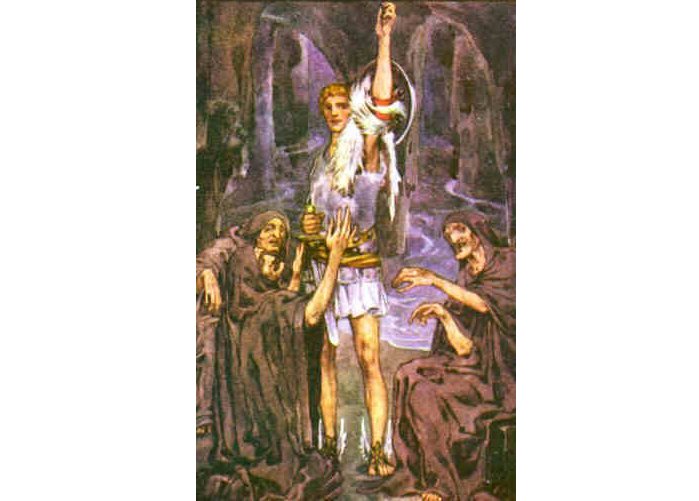Graeae: Three Sisters Of Fate Who Shared One Eye And Tooth In Greek Mythology
A. Sutherland - AncientPages.com - The Graeae were three sisters of fate who shared one eye and one tooth in Greek mythology. They were born as old women and their names were Deino (dread), Enyo (horror), and Pemphredo (alarm).
The number three is of great symbolical meaning in many myths. The Graeae share certain similarities with the three Norns, known as ‘Shapers of Destiny’ in Norse mythology. The Norns were goddesses who ruled the fates of people, determined the destinies and lifespans of individuals.
One might also compare the Graeae with the three spinners of Destiny, the Moirai who were also called the Fates in Greek mythology. The three Moirai determined the span of life of every mortal from birth to death. They were so powerful that no god had the right or the means to alter their decisions.
Although the Fates were the personifications of destiny, no human could blame the fates, as he was the only one responsible for his failures.
The Graeae were three sisters of fate who shared one eye and one tooth in Greek mythology. Image credit: Doorway To Other Worlds
The subject of fate is also reflected in Baltic religion where we encounter Laima, the Baltic goddess of fate who together with Dievs, the sky, and Saule, the sun, Laima determines the length and fortune of human life.
The mythical story of the Graeae has changed over the course of time. In their original conception, they were merely personifications of kindly and venerable old age, possessing all its benevolent attributes without its natural infirmities.
They were old and gray from their birth, and so they ever remained. In later times, however, they came to be regarded as misshapen females, decrepit, and hideously ugly, having only one eye, one tooth, and one gray wig between them, which they lent to each other when one of them wished to appear before the world. So, at times poets described them as "beautiful."
In other legends they are described as being half-swan or old, ugly hags. Their age was so great that a human childhood for them was hardly conceivable.
Born as the daughters of the Sea Gods, sea gods Phorcys and Ceto, and sisters of the Gorgons, the Graeae were powerful creatures and they appear in the myth of Perseus, the hero who killed Medusa, a monster, a Gorgon, generally described as a winged human female with a hideous face and living venomous snakes in place of hair. Gazers on her face would turn to stone.
Perseus Returning the Eye of the Graeae by Henry Fuseli
According to an ancient legend, Perseus was sent by the king to get Medusa's head. Perseus went to the three Graeae, that shared one eye between them, and through stealing it he made them tell him where the nymphs of the north lived. They gave him winged sandals, a magic bag that fit anything put in it, and Hades' cap which made him invisible whenever he wore it. Hermes gave him an unbreakable sword, and Athena a shield.
Perseus took the eye from the Graeae to kill Medusa.
With all this equipment, Perseus managed to kill Medusa by looking at her through the reflection of the shield and escaped her sisters by wearing the cap. His winged sandals flew him home. Later he offered Medusa's head to Athena.
The Graeae are also called Grey Sisters, Graiai, and Graiae.
Written by – A. Sutherland AncientPages.com Staff Writer
Copyright © AncientPages.com All rights reserved. This material may not be published, broadcast, rewritten or redistributed in whole or part without the express written permission of AncientPages.com
Expand for referencesEdith Hamilton, Mythology: Timeless Tales of Gods and Heroes
Bernard Evslin, Heroes, Gods and Monsters of the Greek Myths
More From Ancient Pages
-
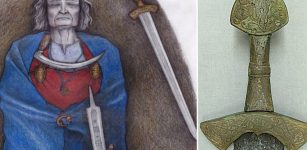 Suontaka Weapon Grave: New Light On Strong Female Leaders And Warriors Of Late Iron Age Finland
Archaeology | Jul 29, 2021
Suontaka Weapon Grave: New Light On Strong Female Leaders And Warriors Of Late Iron Age Finland
Archaeology | Jul 29, 2021 -
 First Roman Military Amphitheater Unearthed Near Megiddo
Archaeology | Jun 1, 2022
First Roman Military Amphitheater Unearthed Near Megiddo
Archaeology | Jun 1, 2022 -
 Norse Shamanism: A Völva And Her Prophecies Were Feared Among Norse Gods And Vikings
Featured Stories | May 19, 2020
Norse Shamanism: A Völva And Her Prophecies Were Feared Among Norse Gods And Vikings
Featured Stories | May 19, 2020 -
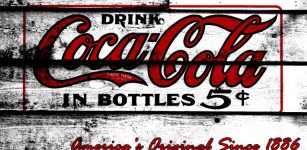 Coca-Cola Was Invented As A Cure For Headache And Hangover In The 1880s
Ancient History Facts | Oct 23, 2017
Coca-Cola Was Invented As A Cure For Headache And Hangover In The 1880s
Ancient History Facts | Oct 23, 2017 -
 Almost Unknown Ancient Greek Text Rewrites History Of Poetry And Song
Archaeology | Sep 9, 2021
Almost Unknown Ancient Greek Text Rewrites History Of Poetry And Song
Archaeology | Sep 9, 2021 -
 Soyal: Hopi Indians’ Winter Solstice Celebration And Arrival Of Katchinas
Ancient Traditions And Customs | Mar 29, 2019
Soyal: Hopi Indians’ Winter Solstice Celebration And Arrival Of Katchinas
Ancient Traditions And Customs | Mar 29, 2019 -
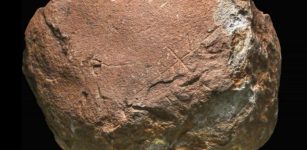 200,000-Year-Old Stone Engravings Found In Marbella Could Rewrite The History Of Prehistoric Art
Archaeology | Mar 17, 2025
200,000-Year-Old Stone Engravings Found In Marbella Could Rewrite The History Of Prehistoric Art
Archaeology | Mar 17, 2025 -
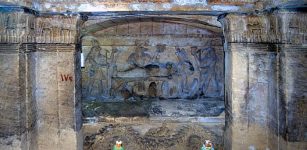 Catacombs Of Kom El Shoqafa – Largest Roman Burial Site In Egypt
Featured Stories | Feb 8, 2021
Catacombs Of Kom El Shoqafa – Largest Roman Burial Site In Egypt
Featured Stories | Feb 8, 2021 -
 Puzzling Construction Of Unique Sunken Ship From The 17th Century Examined
Archaeology | Jul 28, 2022
Puzzling Construction Of Unique Sunken Ship From The 17th Century Examined
Archaeology | Jul 28, 2022 -
 King Menelaus Of Sparta: Husband Of Helen Of Troy And Key Figure In The Trojan War
Featured Stories | May 27, 2020
King Menelaus Of Sparta: Husband Of Helen Of Troy And Key Figure In The Trojan War
Featured Stories | May 27, 2020 -
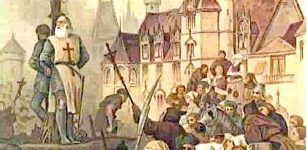 On This Day In History: Knights Templars’ Jacques de Molay Burned At The Stake – On Mar 18, 1314
News | Mar 18, 2017
On This Day In History: Knights Templars’ Jacques de Molay Burned At The Stake – On Mar 18, 1314
News | Mar 18, 2017 -
 One Of Egypt’s Oldest Christian Churches Discovered By Polish Archaeologists
Archaeology | May 31, 2019
One Of Egypt’s Oldest Christian Churches Discovered By Polish Archaeologists
Archaeology | May 31, 2019 -
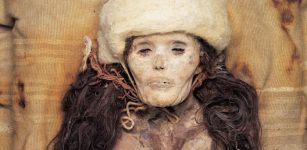 Mystery Of The Tarim Basin Mummies Continues
Archaeology | Oct 27, 2021
Mystery Of The Tarim Basin Mummies Continues
Archaeology | Oct 27, 2021 -
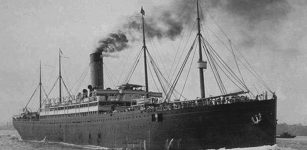 On This Day In History: Courageous And Heroic Radio Rescue At Sea – On Jan 23, 1909
News | Jan 23, 2017
On This Day In History: Courageous And Heroic Radio Rescue At Sea – On Jan 23, 1909
News | Jan 23, 2017 -
 Powerful Ancient Maya Kaanu’l Dynasty And Their Intriguing Reliefs Of Mythical Animals And Celestial Ancestors In Quintana Roo, Mexico
Archaeology | Oct 23, 2024
Powerful Ancient Maya Kaanu’l Dynasty And Their Intriguing Reliefs Of Mythical Animals And Celestial Ancestors In Quintana Roo, Mexico
Archaeology | Oct 23, 2024 -
 On This Day In History: Sverre Sigurdsson Became King Of Norway – On June 29, 1194
News | Jun 29, 2016
On This Day In History: Sverre Sigurdsson Became King Of Norway – On June 29, 1194
News | Jun 29, 2016 -
 Unexpected Discovery Of Roman Baths Under Split City Museum In Croatia
Archaeology | Dec 7, 2023
Unexpected Discovery Of Roman Baths Under Split City Museum In Croatia
Archaeology | Dec 7, 2023 -
 Legend Of Kauravas – Ancient Cloning And Test Tube Babies In India?
Featured Stories | Apr 21, 2017
Legend Of Kauravas – Ancient Cloning And Test Tube Babies In India?
Featured Stories | Apr 21, 2017 -
 Evidence Of The Zanclean Megaflood In The Mediterranean Sea 5 Million Years Ago
Earth Changes | Jan 22, 2025
Evidence Of The Zanclean Megaflood In The Mediterranean Sea 5 Million Years Ago
Earth Changes | Jan 22, 2025 -
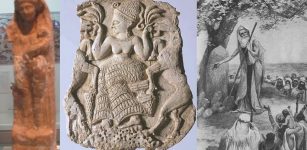 Lost And Forgotten Goddess Asherah – Queen Consort Of The Sumerian God Anu And Ugaritic God El
Biblical Mysteries | Apr 12, 2017
Lost And Forgotten Goddess Asherah – Queen Consort Of The Sumerian God Anu And Ugaritic God El
Biblical Mysteries | Apr 12, 2017



